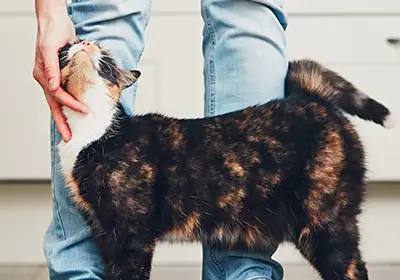Allergic skin disease is one of the most common symptoms seen in pets coming to Sandhole Veterinary Centre in Snodland. Dogs and cats suffer pain and misery from constant itching and scratching in response to the inflammation and secondary bacterial or fungal infections associated with the condition.
Cats and dogs tend to worsen with time, and the problem persists or recurs unless the underlying cause is identified, and a management plan is implemented.
Food allergies account for approximately 20% of cases, whilst atopy (reaction to environment allergens) makes up the other 80%. In the case of the former, symptoms can be controlled by simply avoiding offending food items. So part of the process of diagnosing an allergic dog or cat will be to eliminate or identify any food allergy present.
Cat and dog food allergy facts
Studies show that the following foodstuffs most commonly cause allergic reactions in your pet:
- Beef
- Dairy products
- Wheat (in dogs)
- Fish (in cats)
Lamb, chicken and soya cause a smaller number of allergies.
Some cats and dogs may have gastrointestinal signs such as vomiting, diarrhoea or soft stools, flatulence, bloating and changes in appetite, in addition to their skin symptoms.
Blood and skin testing for food allergy is available but is not reliable and is not routinely used for diagnosis.
Food allergy myths
‘’My dog or cat has always eaten the same food, so can’t be food allergic.”
Just like us, pets can become allergic to any food item at any point in their lifetime.
‘’Gluten-free is a good diet choice for a food trial.”
Wheat allergy is just one of many potential causes of food allergy, and thus switching to a gluten-free diet alone is not enough.
“I’ve found a pet food labelled ‘hypoallergenic’, so we can use that instead.”
Not all ‘hypoallergenic’ foods are appropriate in an elimination trial – the trial diet needs to be chosen according to your pet’s particular dietary history.
Which diet is best for my cat or dog in a food elimination trial?
The best option is to feed your pet a diet that he/she has had very little or no exposure to previously – a vet at Sandhole Vets will work with you to identify suitable foods. Home-cooked diets are not ideal as they are more expensive and time-consuming to prepare, and not being nutritionally complete in the long term.
Hydrolysed prescription diets (available only via prescription from your vet) are often the best choice, as they contain smaller proteins that your pet’s immune system will recognise.
They are also nutritionally balanced and more suitable as a complete diet.
How to perform a food elimination trial for your cat or dog:
- Gradually introduce the diet over a period of 3 to 5 days so that your pet gets used to the new taste and avoids any digestive disturbance.
- ‘Fussy’ pets will need a longer transitional period of 7-14 days.
- When the transition period is complete, record the start date of the elimination trial.
- During the trial, all other food items must be avoided. This includes table scraps or human food, treats and dental products. Fresh drinking water should be provided at all times. If treats need to be given, a small portion of the daily allowance of the trial food can be fed instead.
- Give the practice plenty of notice when ordering your new diet to avoid having to restart the trial if there is a delay in fulfilling your order.
- The recommended trial period is 12 weeks – most dogs and cats will respond by 8 weeks, but a few will take longer.
- At the end of the trial period, it is vital to try and provoke symptoms with the original diet. Some pets will seemingly improve on the diet, but this can be because their atopy has resolved due to a change of season. If a food allergy is indeed the cause, most pets will show symptoms again within 7-14 days of the original diet being reintroduced.
What happens after the food elimination trial?
If your pet is diagnosed with a food allergy, there are two options:
- Continue to feed the trial food, where it is nutritionally balanced and appropriate for your pet’s life stage.
- Maintain the trial food but sequentially add single dietary items each week to try and identify individual sensitivities. We can then help to source an alternative food that avoids any offending foods.







